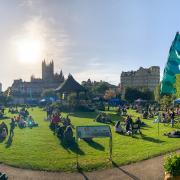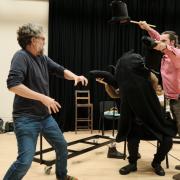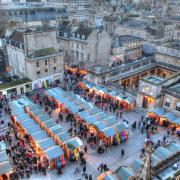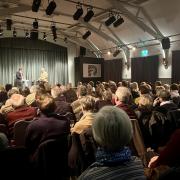PETER NALDRETT explores the history of Somerset’s life-saving coastal towers.
In 1750, with a violent storm underway and an old fisherman still out at sea, it’s not surprising that there was a wife getting anxious at a cottage home close to the church at Burnham-on-Sea.
Worried about conditions out on the waves, she instinctively placed a candle in the window to guide him home. Thankfully, the light was seen by the fishermen and all made it back to land safely. So delighted was the crew that it paid the woman to keep a light in the window every time it needed to plot its way home.
Soon after, a light was placed on top of the church tower because it was higher, and later the Round Tower was built as a more permanent structure. The long history of lighthouses at Burnham-on-Sea had begun.
Replaced by the high and low lighthouses in the 1830s, Burnham is one of the few places to boast three lights in one place.
And the story of our affection with lighthouses is repeated up and down the country, not least along the Somerset coastline. Holidaymakers, locals and sailors have an affinity with the life-saving beams for a number of reasons – not just now, but down through the decades. As a nation we have long been reliant on imports that arrive by boat and, as the shipping trade increased, so did the protection needed.
Throughout the 19th century, as hundreds of ships swept up and down the Bristol Channel, it became evident that the dangers out at sea demanded more extra measures on the shore.
The Severn Estuary off Portishead has the second highest tide fall in the world, with up to a 50ft difference between high and low tide. On several occasions, the often treacherous sea and weather conditions had a shocking impact on sea-faring folk.
Perhaps the biggest profile victim of Black Nore Point was Brunel’s SS Great Western, which ran aground there in 1838 – the same year that the Trans-Atlantic steamer set to sea for the Great Western Steamship Company.
Trinity House, a charitable organisation and General Lighthouse Authority (GLA) for England, recognised the dangers off Portishead, particularly for shipping coming in and out of Avonmouth Docks, and so built Black Nore Lighthouse in 1894.
Constructed on a platform that was made on a rocky outcrop, a series of ribs and struts supported the lighthouse’s tower, all made from cast iron. And so the first light beamed out to sea as the 19th century crept to a close with shipping up and down the Somerset coast on the increase. With electricity still not in general use, a storage tank was placed nearby and connected to the main pipe so that a gas-powered light could be maintained – but it was not looked after by a permanent lighthouse keeper, as was the case elsewhere.
Instead, the job of maintaining Black Nore fell to a local farming family whose land the tower had been built on. Living close by, the Ashford family of Black Nore Farm started their daily trek to the lighthouse on the day that it opened, each time making sure everything was working correctly. The Ashfords looked after the lighthouse every day until the middle of the 20th century, covering several generations of the Somerset farmers. Each visit involved winding the mechanisms that, through the use of weights, kept the light turning.
When World War Two came, Black Nore Lighthouse was converted to electricity so it could be turned off during air raids, with German bombers using it as a marker. A cable ran to the nearby farm, allowing the coast to be darkened at the flick of a switch. Further improvements came in 2000 when the winding mechanisms were replaced with an electric motor. But by then the days of it operating as a working lighthouse were numbered and, after more than 100 years of service looking out over the Bristol Channel and boats increasingly using GPS, Trinity House decided it was no longer needed. The light turned off for good and the equipment was removed.
Plans were made for the historic building to be demolished, but then up stepped Bill Shier, an American who has been based in Portishead for 20 years and decided to rally the local community to save Black Nore.
He says: “I came up with a plan and concentrated on public relations first to make people aware of what was happening. Some people didn’t even know that the lighthouse existed, especially those who are young and people new to the town.” Bill formed a Community Interest Company and arranged to buy the lighthouse from Trinity House for the princely sum of £1, pledging to keep it exactly how it was and not use it for any development.
Fundraising events cover the maintenance and insurance costs and with all the publicity the lighthouse is proving more popular than ever as walkers come to visit and stoll along the coast. Enthusiasts have even come over from the United States to look at the community lighthouse, which still stands proud even though the light is no longer switched on. Bill adds: “Two years ago few people knew about it, but now they are coming from all along the local coast to walk by it and now it’s also a Grade II listed building.”
Around 120 local folk are ‘friends’ of the lighthouse and pay £120 a year towards the running costs.
The story of Black Nore is testimony to the passion people feel for lighthouses, even though they may not know it until one is threatened. Trinity House has now been protecting our shores for 500 years and its maritime work looks set to go on well into the future.



























